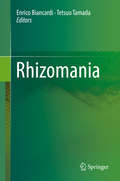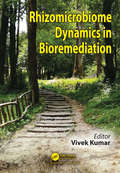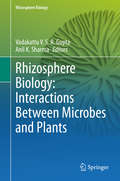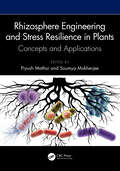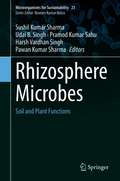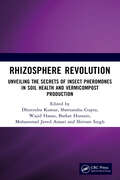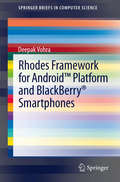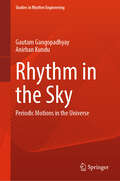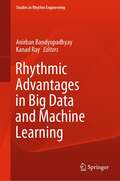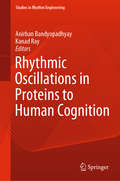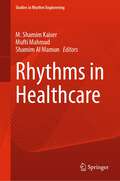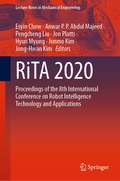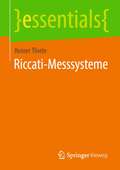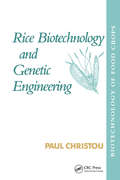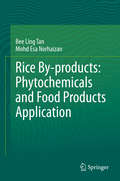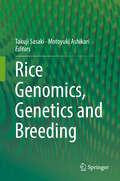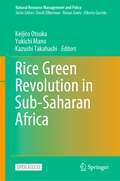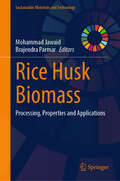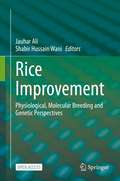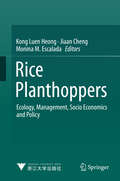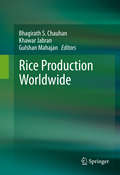- Table View
- List View
Rhizomania
by Enrico Biancardi Tetsuo TamadaThe knowledge of ecology and epidemiology of rhizomania is particularly useful to understand the means and practices able to limit or avoid its further diffusion. Some promising methods of biological control using coexisting and non-pathogenic organisms could potentially help improve the action of the not completely effective genetic resistances. This integrated protection would be valuable, especially in the even more frequent development of resistance-breaking strains in the BNYVV, where the known types of resistance, alone or in combination, seem to have lost part of their original ability to protect the crop. Therefore, further efforts will be needed to discover new traits likely still present in the wild species of the genus Beta. The availability of large collections of germplasm stored in the International Beta gene-banks should ensure the enhanced efficiency of genetic resistance by means of conventional and marker-assisted selection methods. Some almost immune transgenic varieties seem already to be waiting for release where and when it will be possible. The introduction chapter describes briefly the sugar beet crop, the more common diseases, and the damage caused by rhizomania. The following chapters discuss biological properties of the causal virus, BNYVV, and its vector, Polymyxa betae, and their interactions with the environment and the host-plant. In particular, the great advances in research of the molecular biology of BNYVV should be noteworthy, which have been established by a wide range of the most modern methods. Recent work focused on the genetic diversity and evolution of BNYVV is moving forward our understanding of the dramatic worldwide epidemics of rhizomania. Newly developed molecular techniques also lead to practical applications, such as quantification of inoculum in ecological and epidemiological research.
Rhizomicrobiome Dynamics in Bioremediation
by Vivek KumarIntensified agrarian and industrial activity has led to earth's soil and groundwater resources becoming polluted with hazardous materials. Bioremediation delivers a green technology using dynamics of living organisms, typically bacteria, fungi, microalgae and also plants to eliminate contaminants from ecosystem. This biological know-how is not only cost-effective compared to conventional physico-chemical approaches, but also very successful and is being employed in the field. This book focuses on important issues for several critical and common environmental pollutants, resulting in a compilation having recent updates on the bioremediation applications towards green and clean environment. This volume also describes updates on various novel approaches of bioremediation including nanotechnology, rhizomicrobiome technology, composting, metagenomics, and biosurfactants-based bioremediation. This volume is a resource for researchers, environmentalists, professionals and policy makers.
Rhizosphere Biology: Interactions Between Microbes and Plants (Rhizosphere Biology)
by Anil K. Sharma Vadakattu V. S. R. GuptaThis book presents a detailed discussion on the direct interactions of plants and microorganisms in the rhizosphere environment. It includes fifteen chapters, each focusing on a specific component of plant-microbe interactions, such as the influence of plants on the root microbiome, and the downstream effects of rhizosphere microbial dynamics on carbon and nutrient fluxes in the surroundings. As such, the book helps readers gain a better understanding of diversity above the ground, and its effect on the microbiome and its functionality.
Rhizosphere Engineering and Stress Resilience in Plants: Concepts and Applications
by Soumya Mukherjee Piyush Mathur“In the hidden realm beneath our feet, a complex network of interactions unfolds between plant roots and the surrounding soil”.The rhizosphere is a zone of intense biological and chemical activity, which plays a critical role in shaping plant growth, nutrient uptake, and ecosystem functioning. Recent advances in our understanding of root signaling and rhizosphere engineering have revealed the vast potential for manipulating these interactions to enhance crop productivity, improve soil health, and mitigate environmental stresses. It is worthwhile to decipher the molecular signals and nutrient exchanges between plants and microbes, which can in turn facilitate to design an innovative strategy to optimize rhizosphere functioning.It is imperative to bring about the development of more climate-resilient crops, improve soil carbon sequestration, and reduce the need for synthetic fertilizers. This field also offers opportunities for novel biotechnological applications, including the development of microbe-based biofertilizers and biopesticides.As we continue to face the challenges of a growing global population and environmental degradation, rhizosphere engineering offers a cutting-edge solution to crop productivity. It enables harnessing the power of plant–microbe interactions, unlocking new avenues for sustainable agriculture, and ecosystem restoration. This preface sets the stage for exploring the latest advances and future directions in rhizosphere engineering, highlighting its potential to revolutionize our understanding of soil ecosystems and promote a more sustainable future.This book explores the cutting-edge science and applications of rhizosphere engineering and root signaling, bringing together insights from plant biology, soil science, microbiology, and ecology. Unraveling the intricate communication networks between roots and soil can unveil new strategies for sustainable agriculture, ecosystem restoration, and environmental resilience.
Rhizosphere Microbes: Soil and Plant Functions (Microorganisms for Sustainability #23)
by Sushil Kumar Sharma Udai B. Singh Pramod Kumar Sahu Harsh Vardhan Singh Pawan Kumar SharmaPlants create a dynamic micro-biosphere in the soil, around the roots, called as ‘rhizosphere’, which harbors diverse number of microorganisms for sustaining their growth and development. A soil with diverse and multi-traits microbial communities is considered healthy to enhance crop productivity. In the last decades, rhizosphere biology has gained attention due to unraveling of new mechanisms, processes and molecules in the rhizosphere that contributes towards the promotion of plant productivity. The rhizospheric microbes and associated processes are being utilized for harnessing potential of soils in effective and sustainable functioning in the agro-ecosystems. Broadly, the book discusses rhizospheric microbes and their role in modulating functions of soil and crop plant. Specifically, it highlights conventional and modern aspects of rhizosphere microbes such as – microbiome in the rhizosphere, microbes as an indicator and promoter of soil health, rhizosphere microbes as biofertilizer, biostimulator and biofortifyer, microbial signaling in the rhizosphere, recent tools in deciphering rhizobiome, and regulatory mechanisms for commercialization of biofertilizer, biopesticide and biostimulator. The book is useful for agriculture scientist, biotechnologist, plant pathologist, mycologist, and microbiologist, farming community, scientist of R&D organization, as well as teaching community, researcher and student and policy maker.
Rhizosphere Revolution: Unveiling the Secrets of Insect Pheromones in Soil Health and Vermicompost Production
by Dhirendra Kumar Mohammad Javed Ansari Sheetanshu Gupta Wajid Hasan Shivom Singh Barkat HussainThis book analyses the complexities of the rhizosphere ecosystem and discusses the role of insect pheromones in shaping soil health and vermicompost production. It details the mechanisms of insect pheromone communication, their impact on soil microbial communities, and their potential applications in sustainable agriculture and vermicompost production.The subject matter in this book also discusses: The Underground Symphony Pheromones in Pest Control The Sentient Soil Hypothesis Bio-Engineered Insect Allies The Global Impact of Rhizosphere Revolution Print edition not for sale in South Asia (India, Sri Lanka, Nepal, Bangladesh, Pakistan or Bhutan)
Rhizotrophs: Plant Growth Promotion to Bioremediation
by Samina MehnazThis book describes the contributions of rhizotrophs - microbes associated with the parts of plants below ground - in sustainable agriculture. It covers a broad range of aspects, from plant growth promotion to bioremediation. It highlights the role of bacteria, actinomycetes, mycorrhizal fungi, and most interestingly protists, in the sustainability of agriculture. Further, it addresses in detail the involvement of quorum sensing signals, and the role of hydrolytic enzymes and bacteriocin in combating the phytopathogen. The book sheds light on the interaction of rhizotrophs in rhizosphere and how these microbes support plants growing under adverse stress conditions such as saline, drought or heavy-metals contamination. Challenges faced in the field application of these microbes, strategies for modifying the rhizosphere to improve crop yield, and the latest advances in rhizobial bioformulations are also discussed. Overall, the book provides comprehensive information on how various microbes can be used to improve the sustainability of agriculture without disturbing the environment.
Rhodes Framework for Android™ Platform and BlackBerry® Smartphones
by Deepak VohraThe Rhodes framework offers several advantages over other mobile frameworks. Some of the unique features of the Rhodes frameworks are as follows: - The only smartphone framework to offer support for the Model View Controller pattern - The only smartphone framework to offer support for the Object-Relational manager -The only smartphone framework to offer offline, disconnected access to data with the Rho-Synch server - The only smartphone framework to support all mobile devices including Android, BlackBerry, iPhone, Symbian, and Windows - Provides Ruby implementations for all smartphone device operating systems -Provides a web-based Integrated Development Environment for developing mobile applications for all smartphone platforms with the RhoHub development service This book discusses developing Rhodes applications for Android and the BlackBerry platform, as these are the two most commonly used mobile platforms. For each, an application for creating a catalog and another application for getting RSS feed will be developed.
Rhythm in the Sky: Periodic Motions in the Universe (Studies in Rhythm Engineering)
by Gautam Gangopadhyay Anirban KunduThis book provides a brief and pedagogic introduction to a variety of topics, with a common motif that they all occur, in some way or other, in “the sky”, and involve some sort of “rhythm”. Sky is not just the inside of a dome; there are many strata, each with its own beauties and mysteries. As we go up, the atmosphere thins out and ends, and we move into the space, into the realms of planets, asteroids, and comets, and even further, beyond the solar system into the vast Milky Way galaxy. This is where the night sky comes in, with all its twinkling stars, the stars in our own galaxy. We must use telescopes to explore further. In this book, we will start from the ancient astronomers and how they studied the motion of earth through space. Study of planetary orbits, from Kepler and Newton to Einstein, had been fascinating. We will try to take the reader through the wonderful worlds of the cepheid variables and pulsars to the strange oscillations of the neutrinos and the new eye to look at the universe, namely the gravitational waves. The book stops at the discovery of the black hole at the center of our galaxy, but that is just because we must stop somewhere, or the assortment could go on ad infinitum. Some of these topics are highly mathematical in nature, but we will try to avoid the complicated mathematics as much as possible, without compromising with the rigor.
Rhythmic Advantages in Big Data and Machine Learning (Studies in Rhythm Engineering)
by Kanad Ray Anirban BandyopadhyayThe book discusses various aspects of biophysics. It starts from the popular article on neurobiology to quantum biology and ends up with the consciousness of a human being and in the universe. The authors have covered eight nine different aspects of natural intelligence, starting from time crystal found in the chemical biology to the vibrations and the resonance of proteins. They have covered a wide spectrum of hierarchical communication among different biological systems. Most importantly, authors have taken an utmost care that even school-level students fall in love with biophysics; it is simple and more of a textbook and definitely bring the readers to a world of biology and physics like never before. Most authors are experienced academicians, and they have used lucid and simple language to make the content interesting for the readers.
Rhythmic Oscillations in Proteins to Human Cognition (Studies in Rhythm Engineering)
by Kanad Ray Anirban BandyopadhyayThis book explores various aspects of biophysics, from neurobiology to quantum biology and the consciousness of human beings and in the universe. It examines eight different areas of natural intelligence, ranging from time crystals found in chemical biology, to the vibrations and the resonance of proteins, and also discusses hierarchical communication in various biological systems. Written by senior and experts in the field in language that is lucid and easy to understand, it is a valuable reference resource for researchers and practitioners in academia and industry.
Rhythmische Vorteile in Big Data und Machine Learning
by Kanad Ray Anirban BandyopadhyayDas Buch behandelt verschiedene Aspekte der Biophysik, beginnend mit einem populären Artikel über Neurobiologie und erstreckt sich bis zur Quantenbiologie, um letztendlich das Bewusstsein sowohl von Menschen als auch des Universums zu erforschen. Die Autoren haben neun verschiedene Facetten der natürlichen Intelligenz behandelt, angefangen bei der Entdeckung von Zeitkristallen in der chemischen Biologie bis hin zu den Schwingungen und Resonanzen von Proteinen. Sie haben ein breites Spektrum hierarchischer Kommunikation unter verschiedenen biologischen Systemen abgedeckt. Besonderes Augenmerk wurde darauf gelegt, sicherzustellen, dass der Inhalt selbst für Schülerinnen und Schüler zugänglich ist, wodurch die Biophysik wie ein Lehrbuch erscheint, das die Leser in die Bereiche der Biologie und Physik wie nie zuvor entführt. Die Autoren, die größtenteils erfahrene Akademiker sind, haben klare und einfache Sprache verwendet, um sicherzustellen, dass der Inhalt für alle Leser ansprechend und verständlich ist.
Rhythms in Healthcare (Studies in Rhythm Engineering)
by Mufti Mahmud M. Shamim Kaiser Shamim Al MamunThis book provides an insightful review and methodological contribution about future healthcare system. It also provides a space for creating and designing techniques for effective sensing, processing, and analysis of patient health situations based on bio-signal processing. Additionally, it discusses novel methods and algorithms which are needed to overcome limitations in current rhythmic bio-signals models. It also discusses solutions and systems needed to efficiently evaluate and process real-time data. The book is useful for wide range of users, including students, research scientists, teachers, and practitioners working in the field of heath informatics, neuroscience, biomedical engineering, and medical image processing and diagnosis.
RiTA 2020: Proceedings of the 8th International Conference on Robot Intelligence Technology and Applications (Lecture Notes in Mechanical Engineering)
by Jong-Hwan Kim Hyun Myung Junmo Kim Anwar P. P. Abdul Majeed Pengcheng Liu Esyin Chew Jon PlattsThis book gathers the Proceedings of the 8th International Conference on Robot Intelligence Technology and Applications (RITA 2020). The areas covered include: Instrumentation and Control, Automation, Autonomous Systems, Biomechatronics and Rehabilitation Engineering, Intelligent Systems, Machine Learning, Mobile Robotics, Social Robotics and Humanoid Robotics, Sensors and Actuators, and Machine Vision, as well as Signal and Image Processing. As a valuable asset, the book offers researchers and practitioners a timely overview of the latest advances in robot intelligence technology and its applications.
Riccati-Messsysteme (essentials)
by Reiner ThieleReiner Thiele zeigt mit den singulären Lösungen spezieller Riccati-Differenzialgleichungen (DGL) den Entwurf zugehöriger Riccati-Messsysteme (RMS), appliziert in Faraday-Effekt-Stromsensoren. Diese Lösungen sind durch einen linearen Zusammenhang zwischen Messgröße und Messwert gekennzeichnet und deshalb sehr gut zur Anwendung in RMS geeignet. Wegen der Einfachheit der analogen Realisierungen mit Operationsverstärkern (OPV) gibt der Autor ihnen den Vorzug gegenüber aufwendigen digitalen Varianten.
Rice
by Peter A. Coclanis Francesca Bray Peter A. Coclanis Edda L. Fields-Black Dagmar Schäfer Francesca Bray Edda L. Fields-BlackRice today is food to half the world's population. Its history is inextricably entangled with the emergence of colonialism, the global networks of industrial capitalism, and the modern world economy. The history of rice is currently a vital and innovative field of research attracting serious attention, but no attempt has yet been made to write a history of rice and its place in the rise of capitalism from a global and comparative perspective. Rice is a first step toward such a history. The fifteen chapters, written by specialists on Africa, the Americas, and several regions of Asia, are premised on the utility of a truly international approach to history. Each one brings a new approach that unsettles prevailing narratives and suggests new connections. Together they cast new light on the significant roles of rice as crop, food, and commodity and shape historical trajectories and interregional linkages in Africa, the Americas, Europe, and Asia.
Rice Biotechnology and Genetic Engineering: Biotechnology of Food Crops
by Paul ChristouRice represents a unique opportunity for improvement through genetic engineering. This new book provides a detailed review of past and present developments in the genetic engineering of rice, as well as an informed examination of current genetic engineering material and methods.
Rice By-products: Phytochemicals and Food Products Application
by Bee Ling Tan Mohd Esa NorhaizanRice is a vitally important staple food for almost half of the world’s population. As the global population increases, the demands for rice are expected to remain high. Since the rice industry will remain sustainable for a long time, the production of rice by-products will remain high. Substantial evidence suggests that rice by-products such as rice husk, rice straw, broken rice, rice germ, rice bran, and brewers’ rice may possess beneficial effects against oxidative stress and metabolic disorders. These beneficial effects have been linked to the phytochemicals present in rice by-products such as vitamin E, dietary fiber, γ-oryzanol, γ-aminobutyric acid (GABA), and phytosterols. Despite this evidence, the literature pertaining to rice by-products and its derived components has not well been compiled. To this end, Rice By-products: Phytochemicals and Food Products Application provides full coverage of issues pertaining to rice by-products, namely rice demands and rice by-products production, phytonutrients and antioxidant properties of rice by-products, potential health benefits, application in food products, and future prospects. By summarizing all the information in a lucid and comprehensive manner, authors provide a cohesive representation of the literature on the molecular mechanisms involved in the pharmacological effects of the bioactive components that present in rice by-products, as well as plausible means for the prevention of metabolic disorders for readers and allied stakeholders.
Rice Genome Engineering and Gene Editing: Methods and Protocols (Methods in Molecular Biology #2238)
by Anindya Bandyopadhyay Roger ThilmonyThis detailed volume explores rice molecular biology, genetic engineering, and genome editing technologies. Dividing into three parts, the book covers subjects such as genetic engineering and tissue culture of rice, including efficient methods for rice transformation and regeneration, genome editing, targeted integration, and gene stacking in rice, including multiple methods utilizing CRISPR systems for targeted gene knock-out or genome modification via base editing, and diverse methods describing bioinformatic, molecular, and cellular analyses in rice. Written for the highly successful Methods in Molecular Biology series, chapters include introductions to their respective topics, lists of the necessary materials and reagents, step-by-step, readily reproducible laboratory protocols, and tips on troubleshooting and avoiding known pitfalls. Authoritative and practical, Rice Genome Engineering and Gene Editing: Methods and Protocols serves as a valuable resource for researchers worldwide striving to further their efforts on advancing research and producing genetically improved rice varieties.
Rice Genomics, Genetics and Breeding
by Takuji Sasaki Motoyuki AshikariThis book presents the latest advances in rice genomics, genetics and breeding, with a special focus on their importance for rice biology and how they are breathing new life into traditional genetics. Rice is the main staple food for more than half of the world’s population. Accordingly, sustainable rice production is a crucial issue, particularly in Asia and Africa, where the population continues to grow at an alarming rate. The book’s respective chapters offer new and timely perspectives on the synergistic effects of genomics and genetics in novel rice breeding approaches, which can help address the urgent issue of providing enough food for a global population that is expected to reach 9 billion by 2050.
Rice Green Revolution in Sub-Saharan Africa (Natural Resource Management and Policy #56)
by Keijiro Otsuka Yukichi Mano Kazushi TakahashiThis open access book seeks effective strategy to realize a rice Green Revolution in sub-Saharan Africa based on more than ten years of research team’s inquiries into determinants and consequences of new technology adoption in rice farming in seven countries in this region. Rigorous statistical analyses are carried out by using valuable household data of rice farmers. The book is actually sequel to the two earlier books on the same subject published by Springer and edited by K. Otsuka and D.F. Larson, An African Green Revolution published in 2013 and In Pursuit of an African Green Revolution in 2016. The main message of the first book was that rice is the most promising cereal crop in SSA because of the high transferability of Asian rice technology, whereas that of the second book was that rice cultivation training programs are effective in significantly increasing rice yield in SSA. This third book has wider coverage in terms of topics, study periods, and study sites. It continues to show the significant impacts of rice cultivation training on productivity and newly demonstrates the high sustainability of the productivity impact of the training and the existence of spillover effects from trainees to other farmers by using panel data. We newly assess the important role of mechanization in intensification of rice farming, high returns to large-scale irrigation schemes, and the critical role of rice millers in improving the quality of milled rice. Based on these studies, this book provides clear pathways toward full-fledged Green Revolution in rice farming in sub-Saharan Africa.
Rice Husk Biomass: Processing, Properties and Applications (Sustainable Materials and Technology)
by Mohammad Jawaid Brajendra ParmarThis book covers the processing, properties, and application of rice husk, also widely known as rice hull, which is an available agricultural waste in numerous rice-producing countries. These by-products are generated in significant quantities and must be treated and disposed of properly. Rice husk is an abundantly available waste material in all rice-producing countries. Approximately 120 million tons of rice husk is available each year after it has been removed from the whole rice paddy and is composed of 15% carbon, 18% ash, and 67% volatile matter. This book covers in-depth about processing and properties of rice husk and different by-products such as silica, rice husk ash, and nano fillers. This book also deals with various applications of rice husk in adsorbent, construction and building materials, composites, and nanocomposites. The book is a comprehensive reference resource for graduate students, early career researchers, scientists as well technologists working in the field of forestry, natural resources, material, and polymer sciences from concepts, fabrication, properties, and applications.
Rice Improvement: Physiological, Molecular Breeding and Genetic Perspectives
by Shabir Hussain Wani Jauhar AliThis book is open access under a CC BY 4.0 license.By 2050, human population is expected to reach 9.7 billion. The demand for increased food production needs to be met from ever reducing resources of land, water and other environmental constraints. Rice remains the staple food source for a majority of the global populations, but especially in Asia where ninety percent of rice is grown and consumed. Climate change continues to impose abiotic and biotic stresses that curtail rice quality and yields. Researchers have been challenged to provide innovative solutions to maintain, or even increase, rice production. Amongst them, the ‘green super rice’ breeding strategy has been successful for leading the development and release of multiple abiotic and biotic stress tolerant rice varieties. Recent advances in plant molecular biology and biotechnologies have led to the identification of stress responsive genes and signaling pathways, which open up new paradigms to augment rice productivity. Accordingly, transcription factors, protein kinases and enzymes for generating protective metabolites and proteins all contribute to an intricate network of events that guard and maintain cellular integrity. In addition, various quantitative trait loci associated with elevated stress tolerance have been cloned, resulting in the detection of novel genes for biotic and abiotic stress resistance. Mechanistic understanding of the genetic basis of traits, such as N and P use, is allowing rice researchers to engineer nutrient-efficient rice varieties, which would result in higher yields with lower inputs. Likewise, the research in micronutrients biosynthesis opens doors to genetic engineering of metabolic pathways to enhance micronutrients production. With third generation sequencing techniques on the horizon, exciting progress can be expected to vastly improve molecular markers for gene-trait associations forecast with increasing accuracy. This book emphasizes on the areas of rice science that attempt to overcome the foremost limitations in rice production. Our intention is to highlight research advances in the fields of physiology, molecular breeding and genetics, with a special focus on increasing productivity, improving biotic and abiotic stress tolerance and nutritional quality of rice.
Rice Planthoppers
by Kong Luen Heong Jiaan Cheng Monina M. EscaladaThe book discusses planthopper pests of rice. These insects are one of the most destructive pests, threatening food security around the world. The historical development of the rice planthopper problem shows that they are secondary pests and single-discipline control tactics or strategies were not able to manage them, and instead caused frequent resurgences. This book not only presents new approaches to this persistent problem, but also new ecological methods, new perspectives on the effect of pesticide marketing, insights into developing resistant varieties and structural reforms in pest management. Integrating biological, ecological, economic and sociological aspects, it clearly presents the latest information on newly developed strategies for managing this pest. Dr. K. L. Heong is the principal scientist and insect ecologist at the International Rice Research Institute, Philippines. He has been researching rice planthoppers for more than 30 years. Dr. Heong is a fellow of the Third World Academy of Science and the Academy of Sciences, Malaysia. Professor Jia-an Cheng is an insect ecologist who has been studying rice planthoppers for about 50 years. He is a professor at Zhejiang University, China. Professor M. M. Escalada works at Visayas State University.
Rice Production Worldwide
by Bhagirath S. Chauhan Gulshan Mahajan Khawar JabranThis book addresses aspects of rice production in rice-growing areas of the world including origin, history, role in global food security, cropping systems, management practices, production systems, cultivars, as well as fertilizer and pest management. As one of the three most important grain crops that helps to fulfill food needs all across the globe, rice plays a key role in the current and future food security of the world. Currently, no book covers all aspects of rice production in the rice-growing areas of world. This book fills that gap by highlighting the diverse production and management practices as well as the various rice genotypes in the salient, rice-producing areas in Asia, Europe, Africa, the Americas, and Australia. Further, this text highlights harvesting, threshing, processing, yields and rice products and future research needs. Supplemented with illustrations and tables, this text is essential for students taking courses in agronomy and production systems as well as for agricultural advisers, county agents, extension specialists, and professionals throughout the industry.
